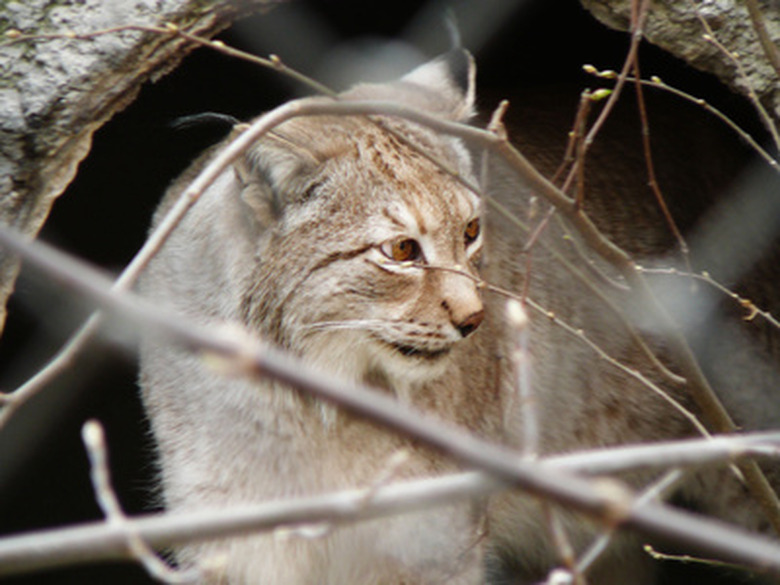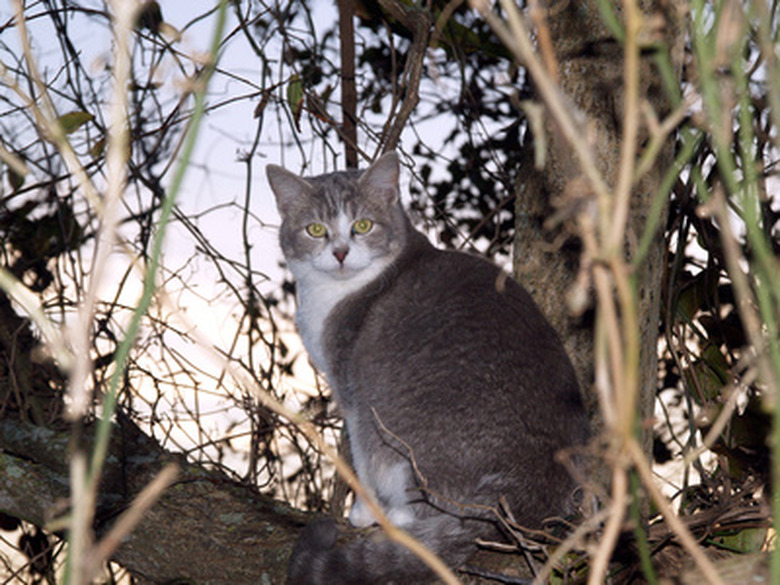How To Repel A Bobcat
Bobcats are the most common and widely distributed wild feline in the lower 48 states; the animals adapt well to human presence as long as they have sanctuary. Like most carnivores, bobcats are exceedingly shy, reclusive and rarely seen. Bobcats do not usually threaten people, though they may occasionally snatch a chicken or turkey from a farmer's barnyard. In the latter case, repelling them in some fashion may be necessary.
Step 1
Light your yard. Bobcats are most active in deep night, just prior to sunrise and during evening twilight. Installing motion-sensor lights might keeping a wandering cat from your chicken coop or other livestock quarters.
Step 2
Guarding your barnyard with a dog is one of the oldest and most effective methods to prevent depredations on livestock and pets by carnivores. Bobcats — which face competition and potential predation from wild canines like coyotes and wolves — are unlikely to tangle with a large dog. A small breed may be viewed as prey by the wild cat.
Step 3
Shelter your animals. Bringing fowl in for the night is an obvious way to reduce their exposure to wild hunters. A well-built coop will ward off most bobcats. A fence around small livestock or birds should be well over 6-feet high. Keeping your housecats inside is also a good idea; bobcats will actively target their smaller, domestic cousins if the opportunity arises.
Step 4
Shout at a bobcat if you encounter one in the yard or the woods. A wild, healthy bobcat will get away from you as quickly as possible. Waving your arms and making noise will help it quickly identify you as a human being. Any bobcat that does not flee — and acts aggressively or abnormally — should be avoided; it may be rabid or otherwise diseased. Call your local wildlife department immediately to report such an animal.
Things Needed
- Lighting
- Animal enclosures
- Guard dog
Warning
Don't feed bobcats, even if you enjoy viewing them on your property.
Cite This Article
MLA
Shaw, Ethan. "How To Repel A Bobcat" sciencing.com, https://www.sciencing.com/repel-bobcat-7727870/. 22 November 2019.
APA
Shaw, Ethan. (2019, November 22). How To Repel A Bobcat. sciencing.com. Retrieved from https://www.sciencing.com/repel-bobcat-7727870/
Chicago
Shaw, Ethan. How To Repel A Bobcat last modified March 24, 2022. https://www.sciencing.com/repel-bobcat-7727870/



